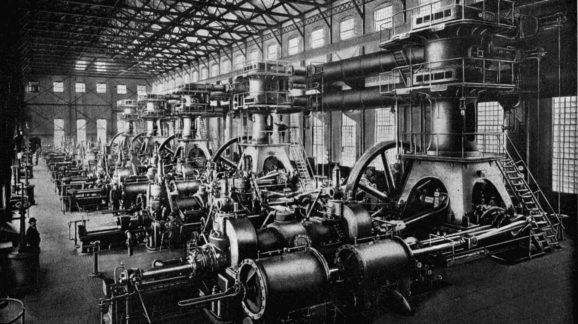History Lesson in Technological Optimism: Simon, Jevons, and Lardner

 Through his publications and scholarly work in the 1980s and 90s, the economist Julian Simon (pictured on the left) challenged the conventional wisdom and the intellectual position of the “anointed,” that resources were becoming increasingly scarce and human demand for them ever larger and more threatening to the survival of the planet. The response of the elites to their own prognostication was the endorsement of a (for some) centrally-planned government bent on regulating, rationing, controlling, and suppressing human individuality and agency. Simon’s empirically-based position, however, was that human ingenuity, coupled with economic and social incentives and a relatively free market, was capable of innovating out of resource and energy scarcity. To Simon, “the ultimate resource is people—especially skilled, spirited, and hopeful young people endowed with liberty—who will exert their wills and imaginations for their own benefit and inevitably benefit the rest of us as well.”
Through his publications and scholarly work in the 1980s and 90s, the economist Julian Simon (pictured on the left) challenged the conventional wisdom and the intellectual position of the “anointed,” that resources were becoming increasingly scarce and human demand for them ever larger and more threatening to the survival of the planet. The response of the elites to their own prognostication was the endorsement of a (for some) centrally-planned government bent on regulating, rationing, controlling, and suppressing human individuality and agency. Simon’s empirically-based position, however, was that human ingenuity, coupled with economic and social incentives and a relatively free market, was capable of innovating out of resource and energy scarcity. To Simon, “the ultimate resource is people—especially skilled, spirited, and hopeful young people endowed with liberty—who will exert their wills and imaginations for their own benefit and inevitably benefit the rest of us as well.”
Eager to demonstrate the value of an historical perspective as to why, in a functioning market economy, people are unlikely to ever run out of resources, Simon once urged pessimistic analysts to learn “from the great economist [William Stanley] Jevons’ scholarly 1865 prediction of cessation of growth for England by 1900 due to lack of fuel” and to remember Jevons’ dismissal of petroleum as a potential substitute for coal. Something Simon did not mention was that Jevons further rejected the notion that technological advances would ever deliver acceptable substitutes. Jevons was especially critical of the professor of astronomy and science writer Dionysius Lardner’s statement that “long before such a period of time shall have rolled away, other and more powerful mechanical agents will supersede the use of coal.” Once the United Kingdom had lost its “main agent of industry,” Jevons argued, its inhabitants would “either sink down into poverty,” adopt “wholly new habits,” or witness an exodus of their youth to better-endowed countries like the United States.
As is obvious in retrospect, Lardner’ optimistic prediction—made in his 1840 treatise on the steam engine—proved prescient. Lardner first described in great detail how revolutionary the new technology was, for it had “penetrated the crust of the earth, and drawn from beneath it boundless treasures of mineral wealth, which, without its aid, would have been rendered inaccessible; it has drawn up, in measureless quantity, the fuel on which its own life and activity depend.” He added that the “enormous consumption of coals produced by the application of the steam engine in the arts and manufactures, as well as to railways and navigation, has of late years excited the fears of many as to the possibility of the exhaustion of our coal mines.” Lardner, however, deemed “such apprehensions… altogether groundless” as “probabl[e], if not certain progress of improvement and discovery ought not to be overlooked” for, in time, “other and more powerful mechanical agents” would run on different fuels.
Lardner’s optimism was grounded in the “vigour, activity, and sagacity with which researches in [the physical sciences] are prosecuted in every civilised country, the increasing consideration in which scientific men are held, and the personal honours and rewards which begin to be conferred upon them.” All of this, he believed, justified “the expectation that we are on the eve of mechanical discoveries still greater than any which have yet appeared.” Indeed, Lardner went so far as to predict that “the steam engine itself…will dwindle into insignificance in comparison with the energies of nature which are still to be revealed; and that the day will come when that machine, which is now extending the blessings of civilisation to the most remote skirts of the globe, will cease to have existence except in the page of history.”
It is refreshing to read Lardner’s 1840 insights on technological innovation as a driver for prosperity and realize that he was inspired to make these predictions of future technologies on the same empirical basis as Simon did when mustering evidence-based opposition to the pessimistic thoughts du jour in the late 20th Century. If there is anything that we should try to learn from the history of Jevons and Lardner’s rivalry, or, in fact, Julian Simon and Paul Ehrlich’s well-documented clash of visions, it is the realization that we are not in a particularly different place when it comes to the gravity of our problems or the challenge of future survival.
As French anthropologist Bruno Latour summarized it: “to speak of ecology now is to repeat almost word for word what was said in 1970, in 1950, or even in 1855 or in 1760 to protest against the damage inflicted on nature by industrialization. This theme has been looping back and forth since the very beginnings of the industrial revolution.” Those who gave into pessimism and fear did little more than inflict misery (and their own hot air) on the rest of humanity; those who, like Lardner and Simon, broke out of the rhetorical loop did something great: they invested in the ultimate resource—us.
The Competitive Enterprise Institute’s observance of Human Achievement Hour this week celebrates this optimism, as does its annual Julian L. Simon Memorial Award, to be presented this year to acclaimed Peruvian economist and property rights advocate Hernando de Soto.
Pierre Desrochers is the 2017 winner of the Julian L. Simon Memorial Award. This post was co-authored with Joanna Szurmak.